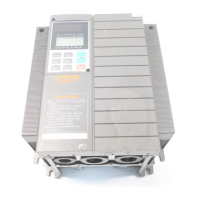5-27
F23, F25 Starting Frequency and Stop Frequency
At the startup of an inverter, the initial output frequency is equal to the starting
frequency. The inverter stops its output at the stop frequency.
Set the starting frequency to a level that will enable the motor to generate enough
torque for startup. Generally, set the motor's rated slip frequency to F23.
For how to set the rated slip frequency, see function code P09.
If the starting frequency is lower than the stop frequency, the inverter will
not output any power as long as the reference frequency does not exceed
the stop frequency.
F26, F27 Motor Sound (Carrier frequency and Tone)
Motor Sound (Carrier frequency) (F26)
Carrier frequency 0.75 to 15 kHz
Motor running noise Noisy to quiet
Output current waveform Poor to good
Leakage current level Low to high
Changing the carrier frequency
may decrease the motor run-
ning noise, leakage current from
the output lines, and electric
noise from the inverter.
Electric noise level Low to high
Lowering the carrier frequency increases the ripple components (har-
monic components) on the output current waveform so as to increase the
motor's power loss and raises the temperature of the motor. If the carrie
frequency is set at 0.75 kHz, for example, estimate the motor output
torque at 85% or less of the rated motor torque.
On the contrary, raising the carrier frequency increases the inverter’s
power loss and raises the temperature of the inverter. The inverter has a
built-in overload protection function that automatically decreases the
carrier frequency to protect the inverter. For details about the function,
refer to function code H98.
Motor Sound (Tone) (F27)
Changes the motor running sound tone. This setting is effective when the carrier
frequency set to function code F26 is 7 kHz or lower. Changing the tone level may
reduce the high and harsh running noise from the motor.

